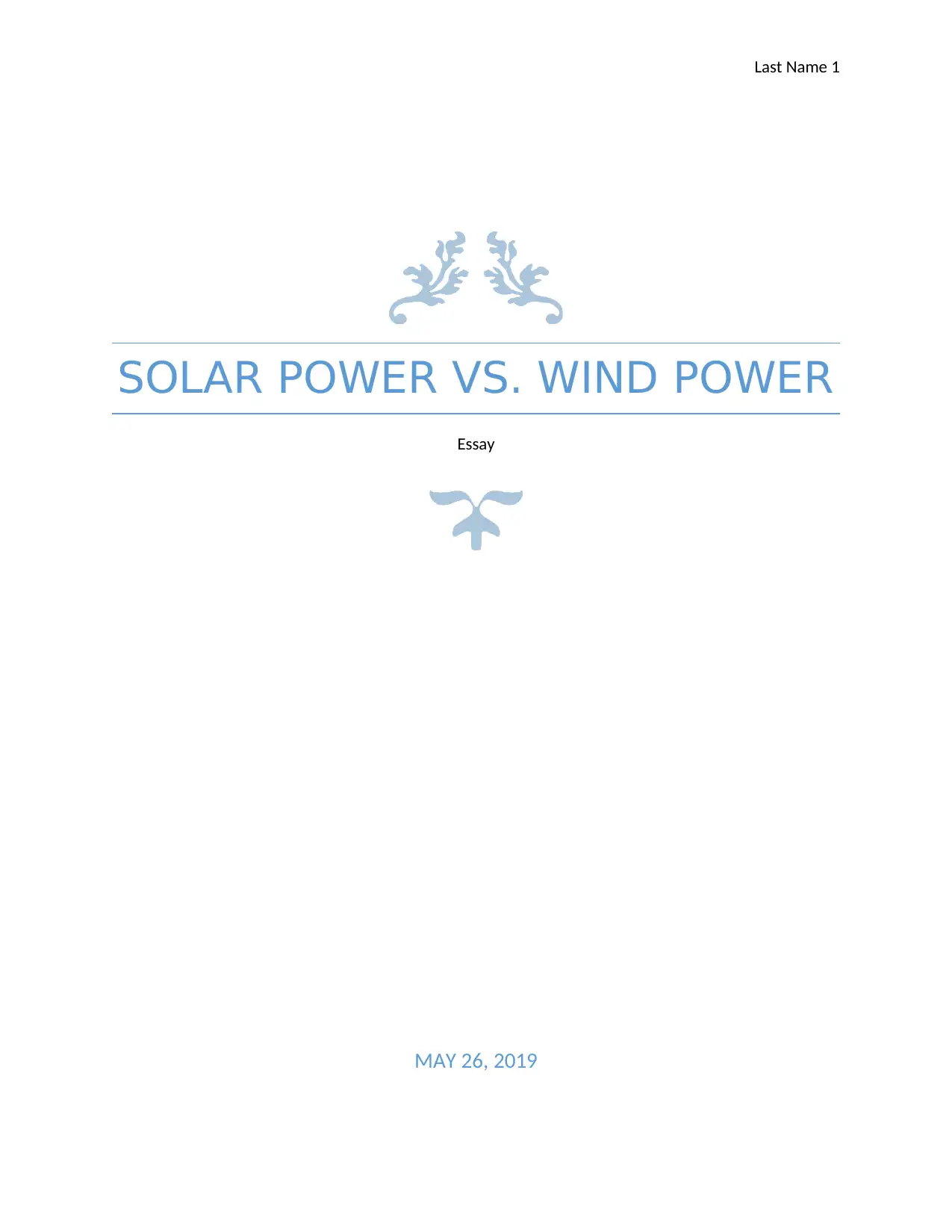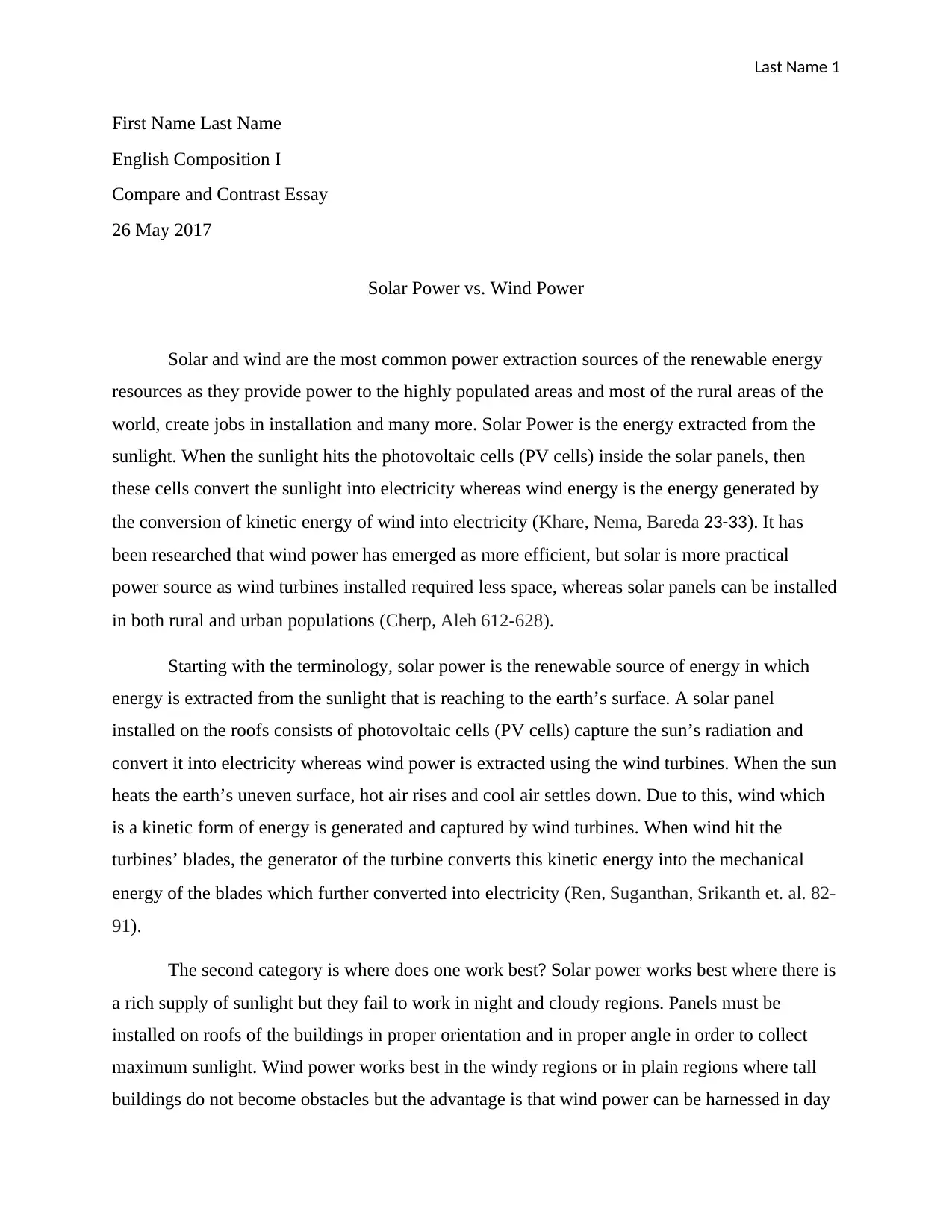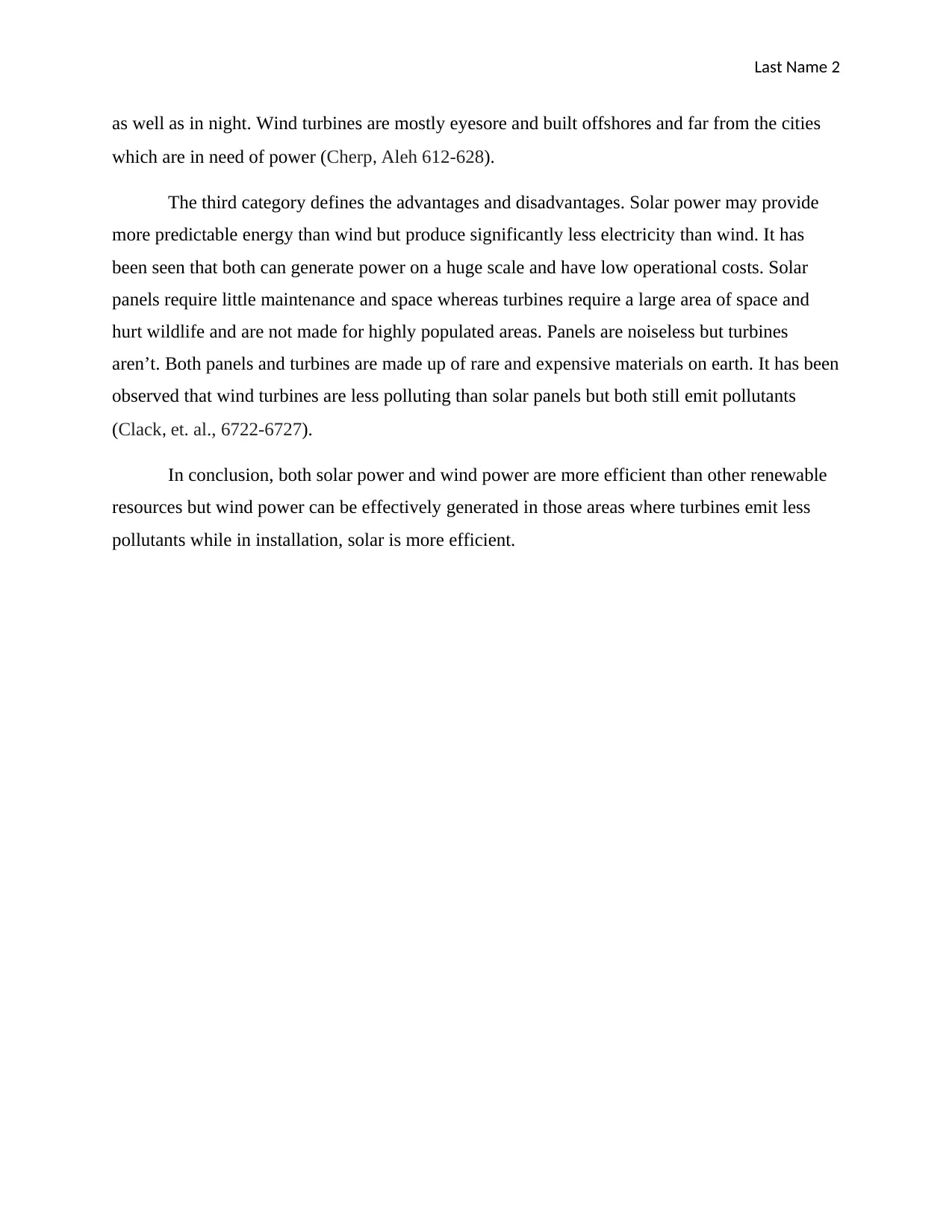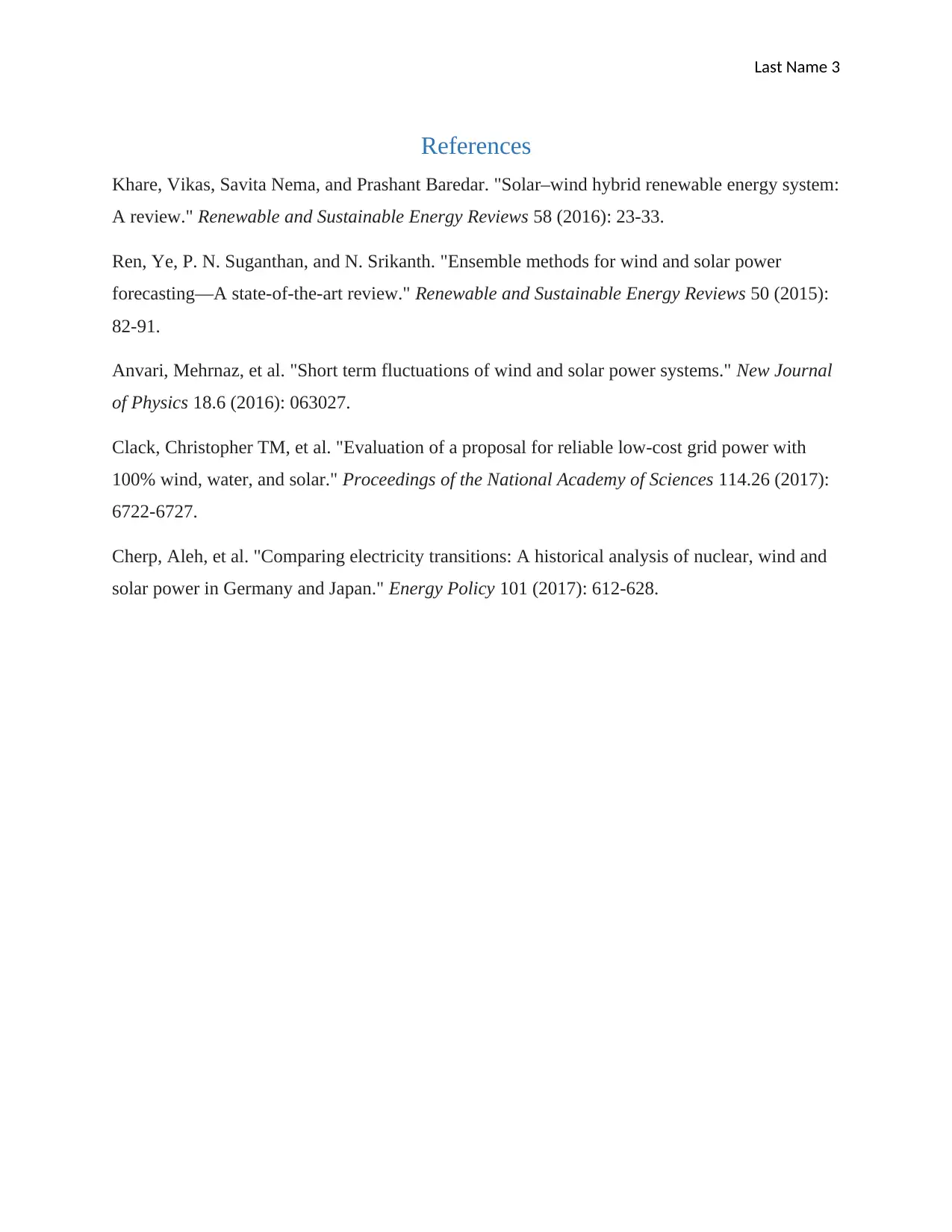Solar Power vs. Wind Power
VerifiedAdded on 2023/03/31
|4
|679
|100
AI Summary
This essay compares and contrasts solar power and wind power as sources of renewable energy. It discusses their efficiency, practicality, advantages, and disadvantages. The essay is for an English Composition I assignment.
Contribute Materials
Your contribution can guide someone’s learning journey. Share your
documents today.
1 out of 4










![[object Object]](/_next/static/media/star-bottom.7253800d.svg)